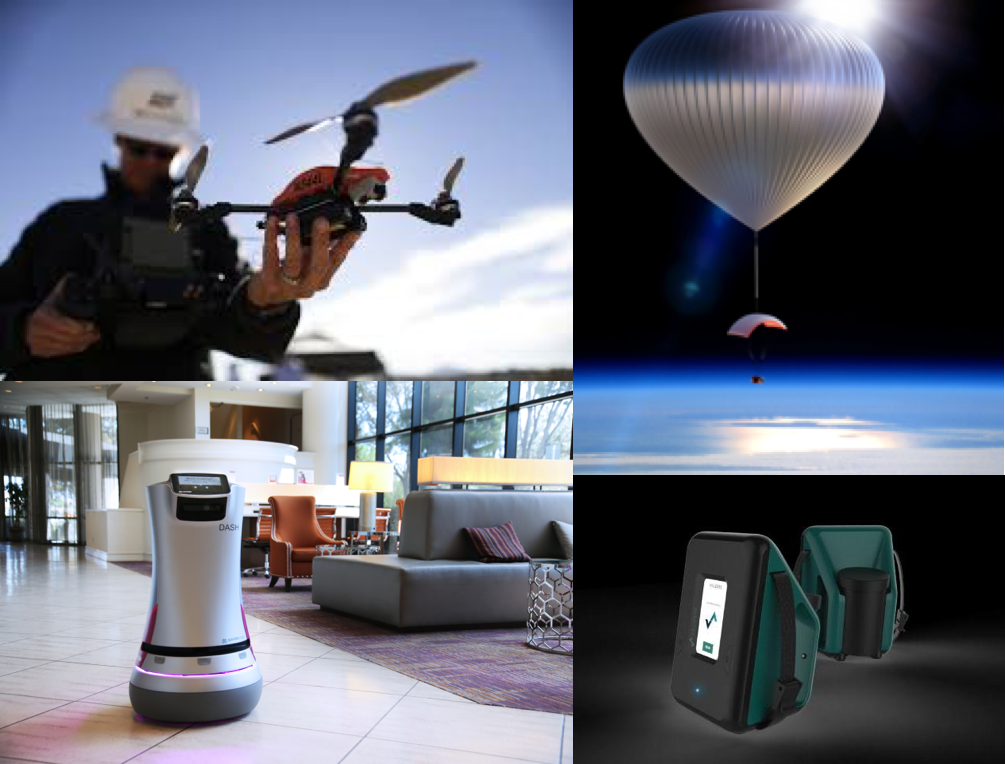We think we’re onto an interesting thing with our investment strategy at Moment Ventures. Like all good strategies, it emerged from our ideas meeting the reality of the marketplace (as per the dour German in the picture).

In our case, we are very lucky that engaging the marketplace helped expand our vision and as a result, we are seeing some great investment opportunities in our sector. Let’s get a little more specific about the Infrastructure of Everything.
My partners and I built our careers in the IT infrastructure industry. This is the grungy stuff that makes IT work and we love it! Security, networking, analytics, computing, storage — these are huge parts of the IT market, and the nice thing is that they are continually evolving — which creates opportunity. We originally set off to find interesting disruptors in traditional IT segments: networking, security, datacenter management and optimization and made our first three investments at Moment in Soha, NodePrime and Twin Prime. We’re proud of the fact that all three companies were acquired in 2016 by Akamai, Ericsson and Salesforce, respectively, enabling us to make nice distributions to our investors in the first year of our Fund I. Given our passion for the IT space, we continue to find great opportunities in these markets and our current portfolio includes companies like Netsil (application monitoring and analytics), and Viptela (SD-WAN).
In our continuing hunt for interesting investment opportunities, we’ve also met visionary entrepreneurs that aren’t building classic IT infrastructure companies. They are, however, building infrastructure companies of a different nature in that they are focused on improving the operations of customers in their target market and, in some cases, society itself. That led us to coin the term The Infrastructure of Everything – companies and solutions that make entire ecosystems, markets or society work better. In executing this strategy, we have found three different types of Infrastructure of Everything companies. We covered our IT infrastructure investments above, and our interest in People-Based Platforms in a recent post. In this post, we’d like to discuss the third group of companies — those we call New Device Ecosystems.

The Era of Purpose-Built Computers
We believe that information technology is getting further and more deeply integrated into the physical world that we live in — the world of buildings, cars, bridges, tunnels, restaurants, schools and hospitals. Cheap computing and sensors and ubiquitous high bandwidth wireless connectivity are some of the factors enabling this integration. Essentially, after living in a world where computers looked like computers (or smartphones in the past decade), we now have computers that have wings (drones), wheels (robots) and bells (home fixtures). These are what we call New Computers.
Just like old computers, you need software to make New Computers work. Unlike traditional computers and smartphones, where a lot of the software value creation was in applications (think Excel or SAP) or apps (think Facebook), New Computers don’t really drive that kind of user interaction. In addition, unlike the prior generations of computers, New Computers are coming into being in the age of cloud computing. Based on these trends, New Computer software is embedded in the device, the network itself or on a computer resident somewhere else in the cloud. We see tremendous opportunity in these areas and the devices themselves — this is what we call New Device Ecosystems.
For New Devices, New Ecosystems Are Required
Some of our investments (and the new devices they enable) in this area include:
Skyward (drones). Skyward has built a flight management platform for commercial drone fleets. Delivered as a SaaS platform, Skyward enables any business that uses drones to keep a digital track record of all drone and pilot fleet activity.
Savioke (robots). Savioke has built a delivery robot targeting “indoor” logistics, with a significant amount of software addressing the nuances of robot-to-human interaction. The first use case is in the hospitality industry and Savioke’s Relay is installed at leading hotels in California and increasingly around the world.
Savioke robots for indoor logistics and deliveries
World View (stratollites). World View is building the first commercial flight operations service using stratollites, a new Internet endpoint that can transport payloads to the stratosphere (approximately 20 miles above us, before you get to space). World View opens the world up to a whole range of new applications by bringing technology to a place we’re only beginning to understand.
World View is the world leader in stratollites
Validere (liquid readers). Validere’s technology provides instant, in-field characterization of the chemical makeup and material properties of unknown and potentially hazardous liquids.
Validere readers can analyze makeup of any liquids in real time
These are just some of exciting things we see in New Device Ecosystems. And we think this is just the beginning! There’s cars, AR/VR wearables, sensors, cameras and much, much more! The age of New Computers is just starting and the opportunities for human advancement and societal transformation are many, and we’re looking for the architects of connecting these new devices to the IT ecosystem.
If you are:
- deeply passionate about a new cutting edge technology or New Computer (such as drones, robots, cars or stratollites),
- interested in solving a big industry problem (such as indoor logistics or instant liquid characterization),
- sure that it takes more than just a piece of hardware to solve a problem well, and
- excited about building a software-enabled infrastructure class solution that is truly transformational,
then come talk to us!





